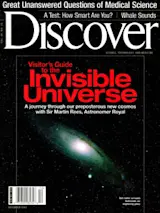Introduction:What the Eye Can't See
One of the most remarkable astronomical revelations of our time is the discovery that the universe is expanding. But that revelation has left us with equally great questions: Will the outward rush continue forever, even to the point where the stretching of space rips galaxies apart? Or will the motions reverse at some point so that the firmament collapses back into a big crunch?
In principle, determining our fate should be a simple matter of cosmic bookkeeping. The answer depends on how much mass is out there: Gravity, which attracts objects toward each other, fights against expansion. By tallying up everything we can see, astronomers should be able to predict if there’s enough stuff out there to pull the cosmos back together. Yet every time they attempted a cosmic census over the past 70 years, the results came out wildly inconsistent. Eventually, the failures led ...














